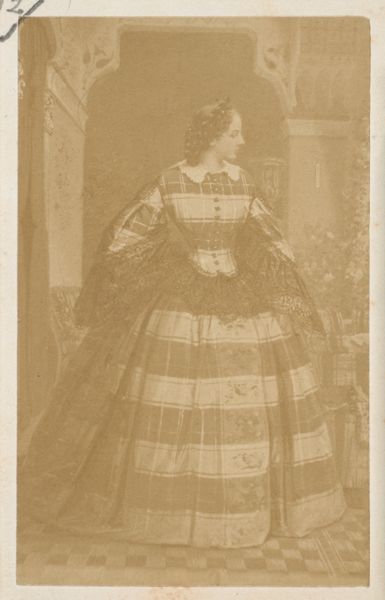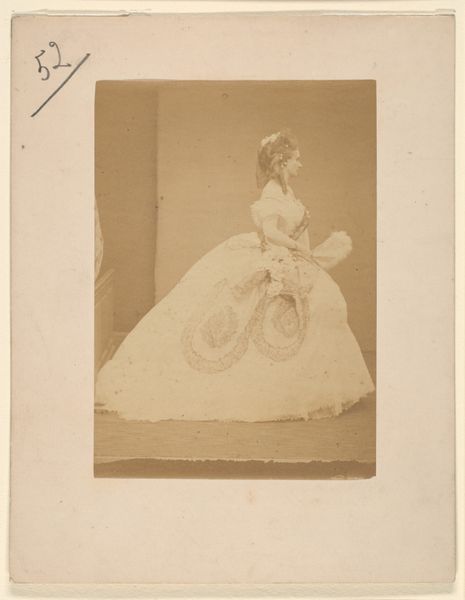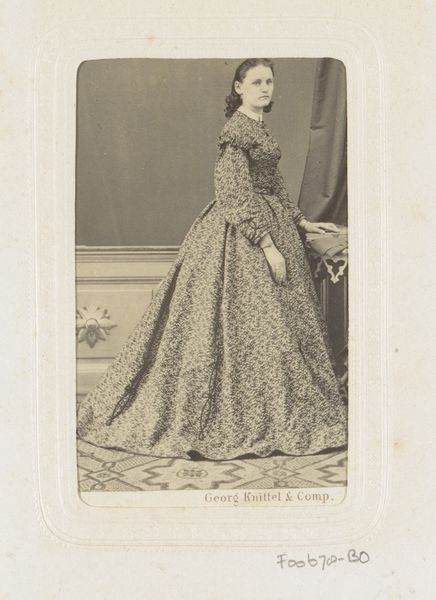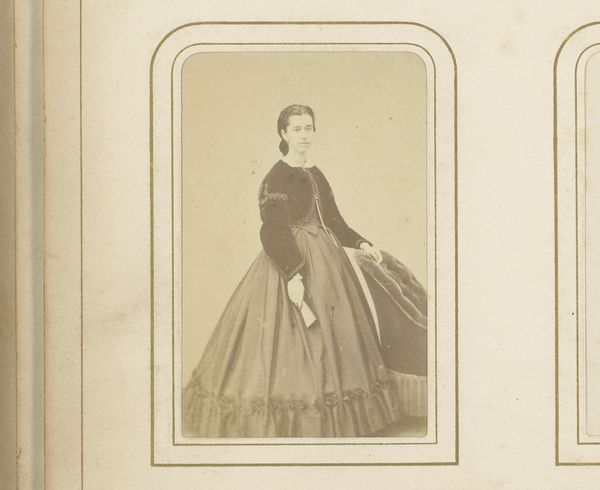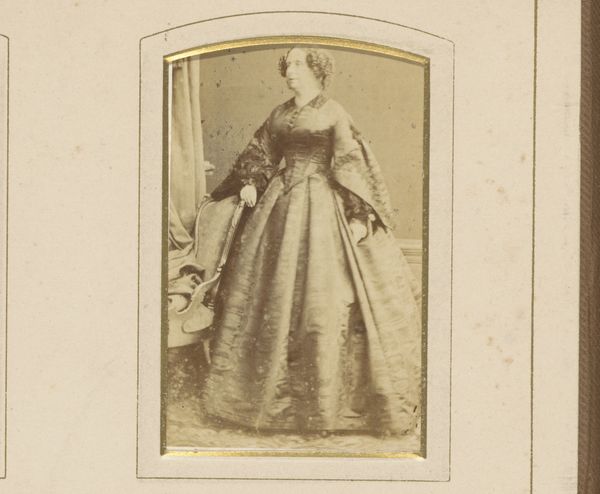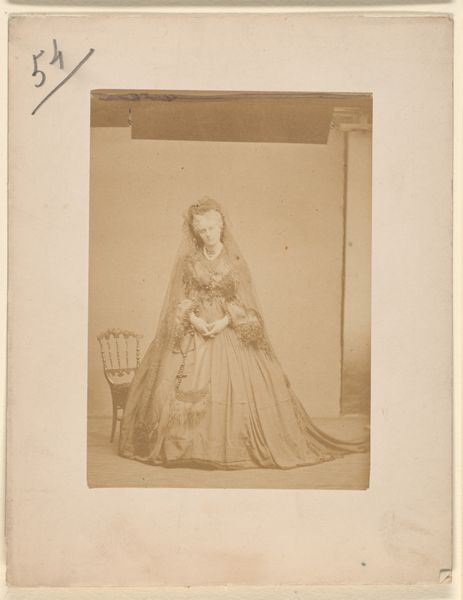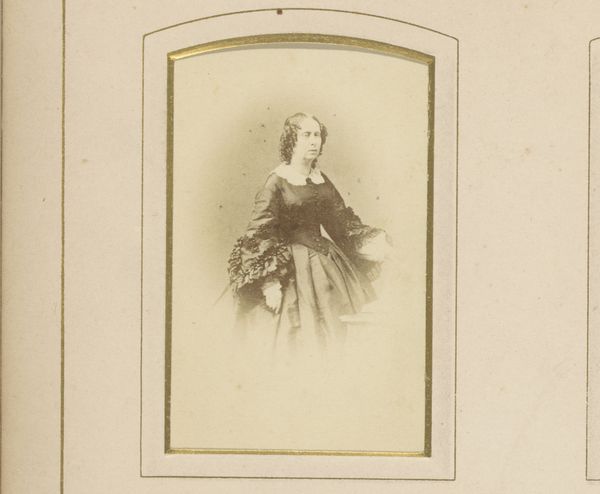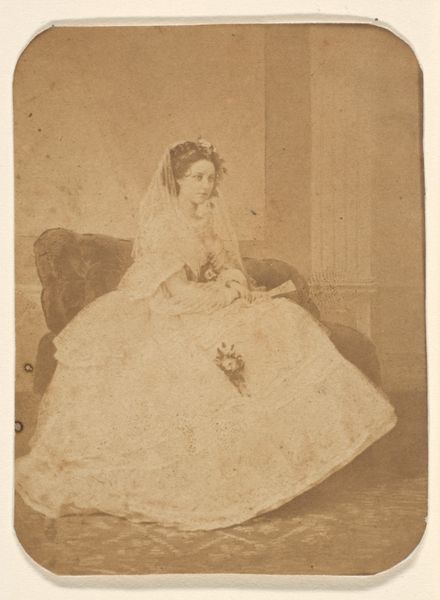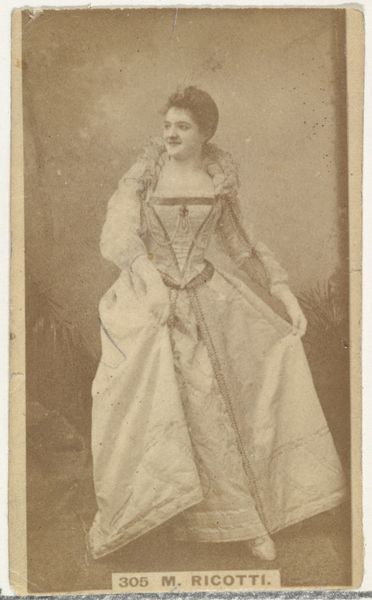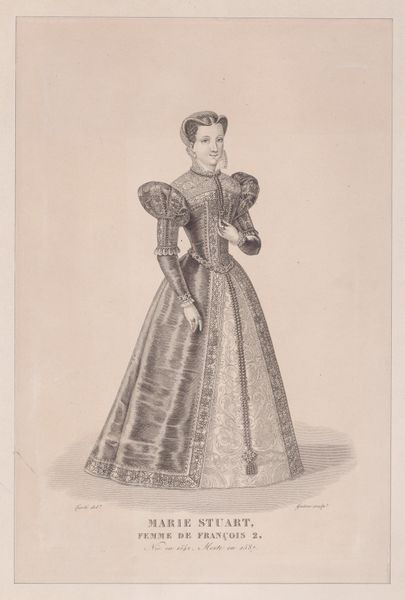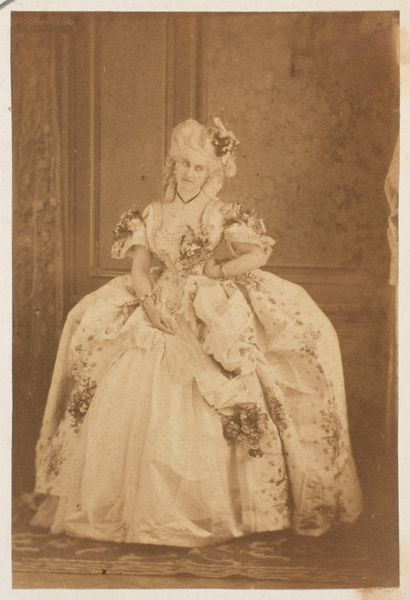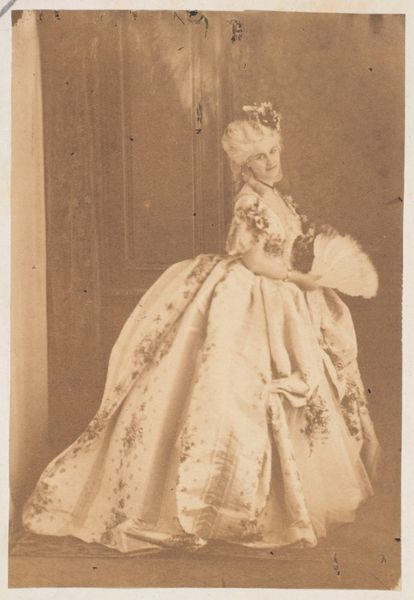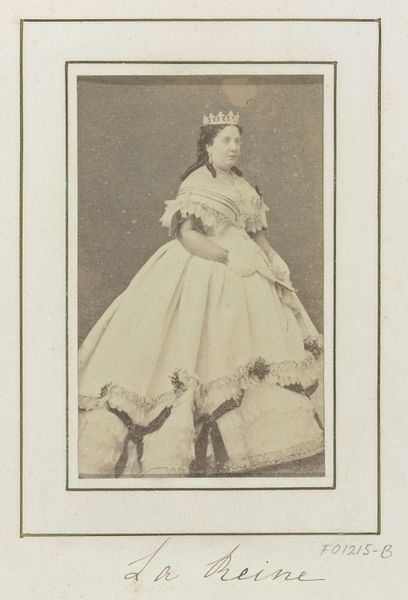
Dimensions: 5.1 x 8.6 cm. (2 x 3 3/8 in.)
Copyright: Public Domain
Editor: This is “La taille,” a photograph from the 1860s by André-Adolphe-Eugène Disdéri. I’m immediately struck by the textures – the lace, the plaid of the dress – and how they play against the relative flatness of the backdrop. What are your initial observations about the piece? Curator: My attention is drawn to the deliberate construction of the image. Consider the pose, slightly averted, the meticulous arrangement of folds in the dress. It adheres to a convention, yes, but look closely at the deployment of light and shadow. It sculpts the figure, emphasizing volume and contour. The semiotic value lies not just in the representation but in the _presentation_. Do you notice how the dress acts as a structured object, how it nearly eclipses the model's shape? Editor: I do see what you mean about how the dress almost overwhelms the figure. It’s interesting how the details, the lace and plaid, are so sharp, considering the limitations of photography at the time. Were these portrait photographs typically trying to emulate painting? Curator: In some ways, yes. Note the composition. It adheres to established portraiture formats, but photography offered a unique texture. The tonal gradations, the delicate balance between light and shade - Disdéri uses these to build depth and spatial relationships. And you have to consider the context, the rise of the "carte-de-visite," a relatively affordable way to capture one’s likeness. So this isn't just a portrait, it's a carefully constructed artifact designed to project a very specific idea. What feeling do you think it invokes? Editor: I suppose, knowing that it's a "carte-de-visite," the emphasis shifts. I was viewing it as a more timeless artistic piece, but it’s intriguing to see how it also functions as an early form of mass media, and an aspirational display of status. Curator: Exactly. This image serves a purpose: capturing a likeness for personal dissemination while presenting an ideal of beauty, and social position, within the photographic structure. Editor: It’s fascinating to see how this photographic portrait uses form and composition to reflect not just an individual but an entire era of social communication. Curator: Precisely! The interplay between representation and structural presentation, that's where we find its significance.
Comments
No comments
Be the first to comment and join the conversation on the ultimate creative platform.
